When considering a Harley-Davidson, you’re not just buying a motorcycle; you’re getting a piece of American history. However, just like any other vehicle brand, there are certain years and models that have proven to be less reliable over time. It’s valuable to be aware of these certain models and years so that you can make a well-informed decision on your purchase, ensuring that you’re hitting the road with confidence rather than heading towards a potential letdown.
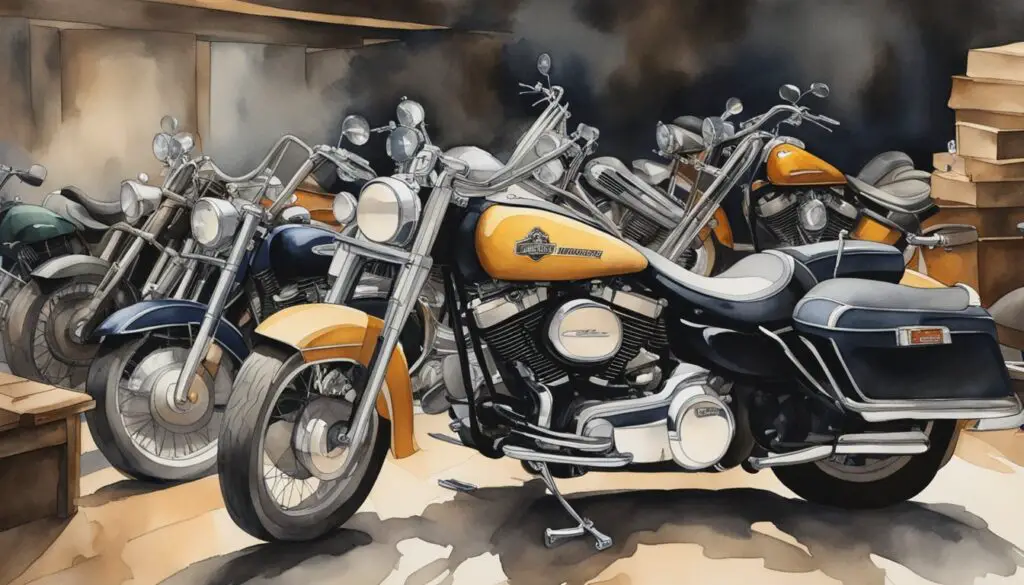
Specific Harley-Davidson years to pay attention to are primarily from the late 1990s to the early 2000s. This period saw issues with the Twin Cam engines that were installed in bikes from 1999 to 2006. These engines had problems that could lead to expensive repairs, such as cam tensioner failures. It’s also worth noting that the early 2000s Road Glides had their share of issues, including concerns with the fuel delivery system and frame stability.
Being equipped with this knowledge, you can sift through options more effectively, ensuring that your Harley-Davidson experience is filled with the thrill of the ride and the pride of owning a piece of iconic machinery, rather than unexpected trips to the mechanic. Remember, a little research goes a long way in the quest for the perfect ride.
Quick navigation:
– Best and Worst Electra Glide Years: A Comprehensive Guide
– Best and Worst Road King Years: A Comprehensive Guide
– Best and Worst Sportster Years: A Comprehensive Guide
– Best and Worst Street Glide Years: A Comprehensive Guide
Identifying Harley-Davidson Models to Avoid
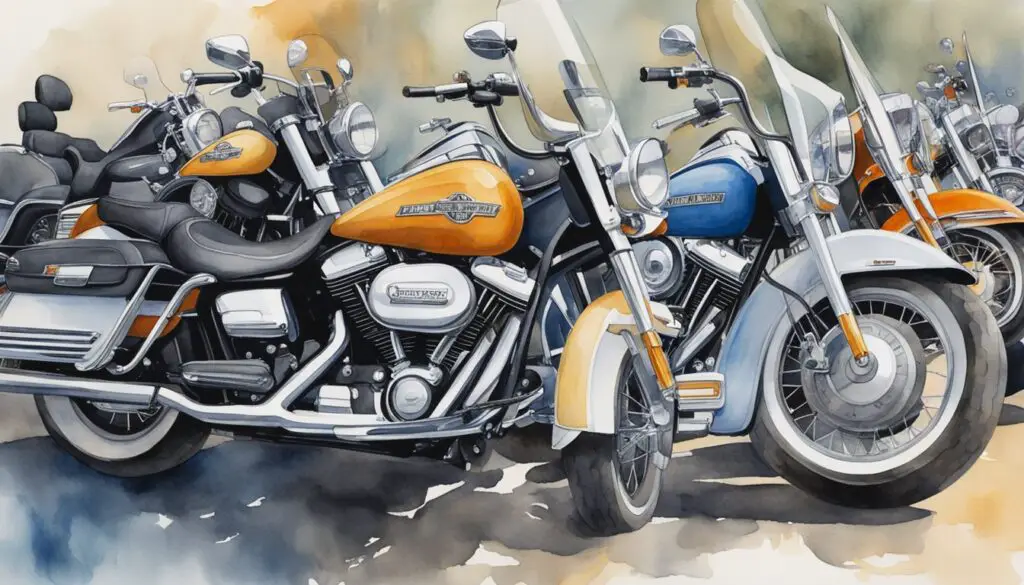
When you’re on the lookout for a Harley-Davidson, it’s important to know which model years have a history of issues and should be approached with caution.
Historical Trouble Spots Across Model Years
Harley-Davidson motorcycles are iconic and have a dedicated fanbase, but certain years saw models that fell short in reliability. You should be particularly wary of Harley-Davidson Twin Cam engines from 1999-2006. Especially, the 1999-2002 models experienced significant camshaft chain tensioner failures and are often regarded as the worst.
Specific Models Known for Issues
Here’s a concise list of specific Harley-Davidson models that you might consider avoiding due to their history of problems:
- 1999 FXSTB Night Train
- 2001 Harley Sportster
- 2004 Harley Sportster
- 2014 Electra Glide
- 2019 Harley Sportster
Beyond specific years, the AMF period (1969-1980) is also known for less robust quality control across various models.
Common Mechanical and Design Flaws
When inspecting potential Harley purchases, keep an eye out for common issues such as:
- Camshaft Chain Tensioner Failure: This is particularly prevalent on models from the late 1990s and early 2000s.
- High Crank Runout: Noted largely in the 1999-2002 Twin Cam engines, resulting in vibration and potential engine damage.
By staying informed and carefully considering these trouble spots, you’ll be better equipped to select a Harley-Davidson motorcycle that can provide a reliable and enjoyable riding experience.
Engine and Transmission Concerns
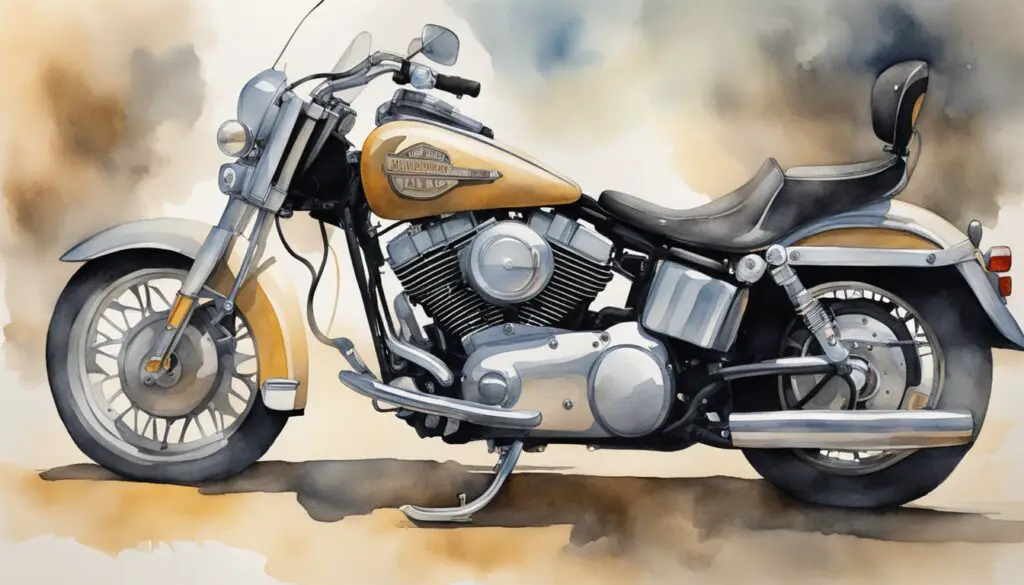
When you’re in the market for a pre-owned Harley-Davidson, it’s important to be mindful of engine and transmission issues documented in certain models. Notably, the Twin Cam engine and some transmission aspects have been sources of concern.
Cam Chain Tensioners and Engine Problems
Twin Cam Engine: Introduced in 1999, the Twin Cam engine became known for its performance. However, camshaft chain tensioner failure has been a significant problem, particularly in models from 1999 to 2006. This issue can lead to potential engine failure, which is a costly and complex fix.
- High Crank Runout: Some models with the Twin Cam engine also experienced high crank runout, contributing to the tensioner’s rapid wear.
Transmission Defects and Performance
Transmission: While Harley-Davidson motorcycles are known for ruggedness, certain transmission issues have plagued various models over the years. This includes difficulty in gear shifting, and in some cases, outright transmission failures.
- 2007-2008 Electra Glide Classics: These specific models dealt with notable engine and transmission problems.
- 1999-2001 Electra Glide: Stalling and transmission issues were prevalent during these years.
Note: It’s crucial to have a thorough inspection or review the motorcycle’s service history for signs of these concerns before making a purchase.
Handling and Safety
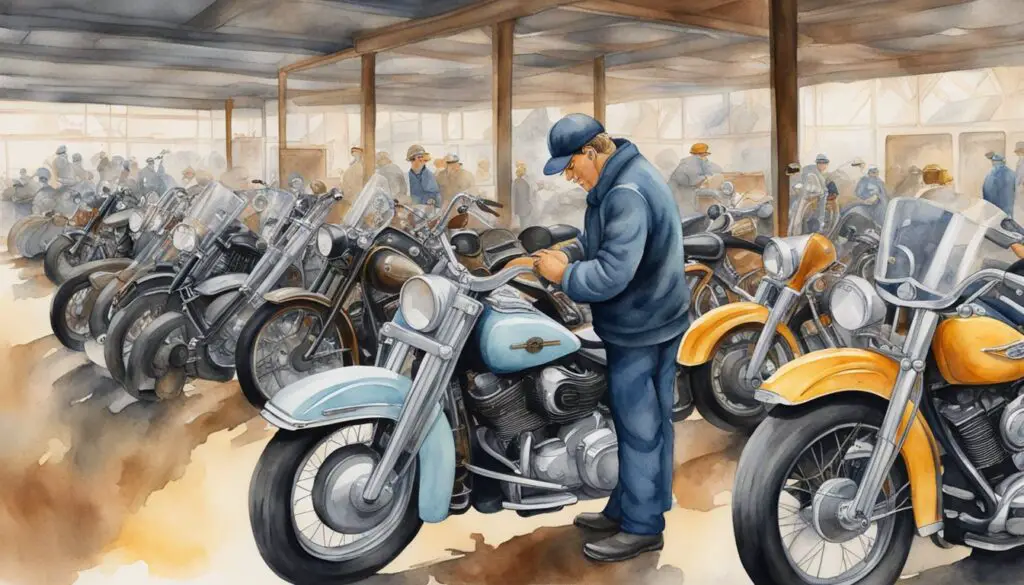
When you’re choosing a Harley-Davidson, your safety on the road is paramount. Handling and stability issues can not only dampen your ride’s comfort but also pose significant safety risks. Let’s look at specific models with noted handling and safety concerns.
Frame and Suspension Issues
1999-2006 Twin Cam Engines: Models from these years have a notable risk with their cam tensioner, which can lead to engine problems and potentially affect your ride’s smoothness and safety. It’s important to inspect these components carefully if you’re considering a bike from this period.
2009-2013 Road Glide and Touring Models: These bikes are reported to have had issues with the frame and swingarm that could compromise the bike’s structural integrity. Check for any recalls or service bulletins that may have been issued to address these concerns.
Stability and Riding Comfort
1998 Road Glide: This was the debut year for the Road Glide, and it’s often mentioned for having handling and stability problems, possibly attributed to design flaws. This can affect your riding comfort and overall control of the motorcycle.
Death Wobble: Some riders have reported a “death wobble” experience, a severe form of instability, on various Harley models. While no specific years are pinpointed regularly, always test the bike fully to assess stability before purchasing.
Remember, a well-maintained bike can have significantly fewer issues, but it’s useful to be aware of these potential concerns when you’re looking at different Harley years and models.
Electrical and Infotainment System
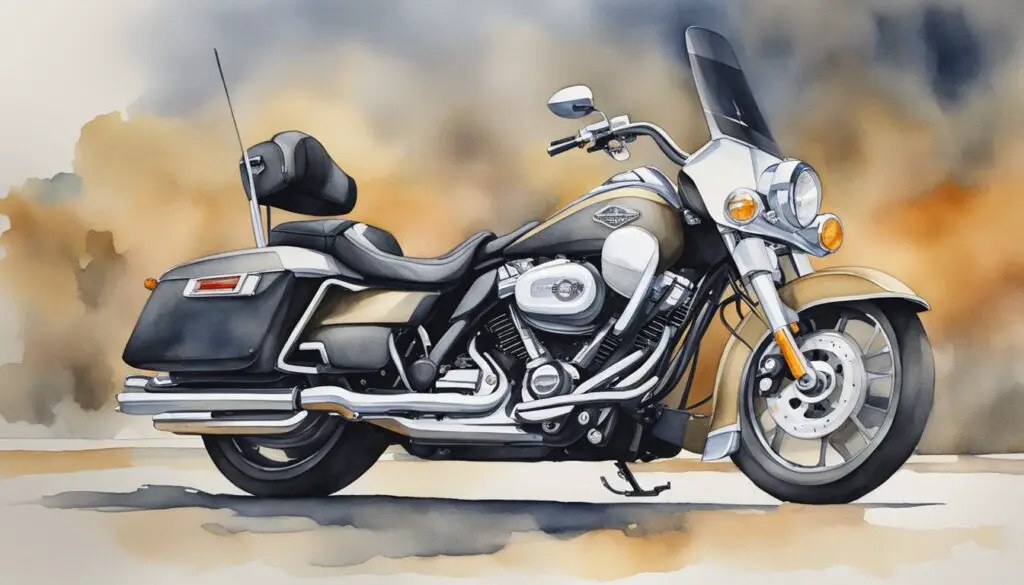
Your Harley-Davidson may be an icon of the road, but certain years have seen models with electrical issues and infotainment system failures. Here’s what you should watch for.
Harley-Davidson’s Electrical Issues
The 2016 Harley Street Glide faced significant electrical troubles, mainly involving failing components. Reports indicate that failures ranged from the infotainment system to the bike’s essential electrical components. When looking at models, especially from 2014 through 2018, it’s important to scrutinize the electrical system’s condition.
Infotainment System Reliability
Harleys from around 2014 to 2018 experienced problems with their infotainment systems. Issues reported ranged from clunking noises to system malfunctions, with the 2017 and 2018 Street Glide models being particularly susceptible. Before making your decision on these years, ensure to test the infotainment system thoroughly for any signs of malfunction.
Heat Management and Oil Leaks
Your Harley’s performance depends heavily on its ability to manage heat and maintain a clean oil system.
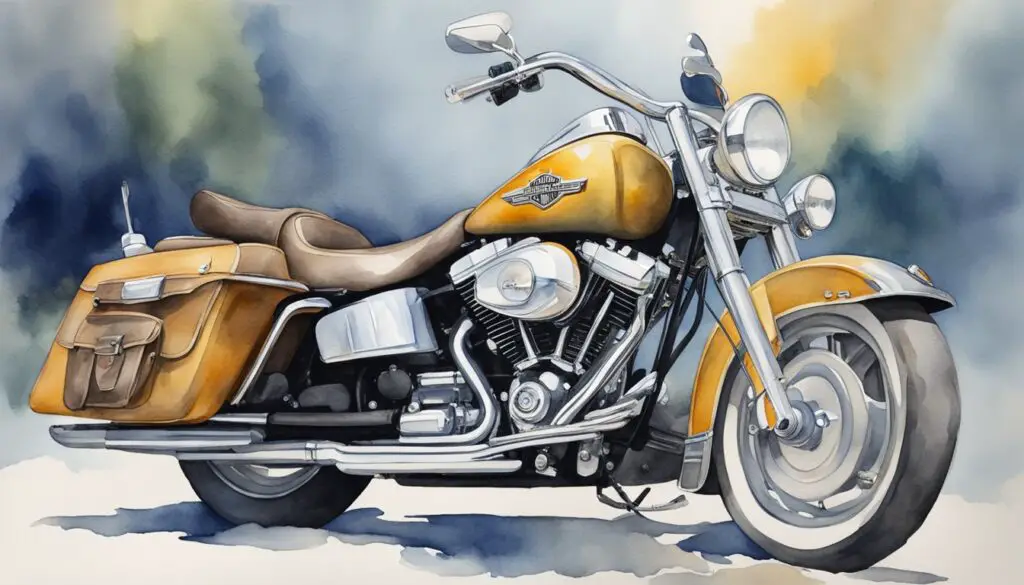
Overheating Issues in Engines
Overheating can significantly reduce the lifespan of your engine. It’s essential to be aware of the years and models that are more susceptible to this issue. Harleys have been equipped with air-cooled engines for many years, but these engines can struggle to dissipate heat under certain conditions, especially in heavy traffic or during hot weather.
- 1999 FXSTB Night Train and early 2000s models: These may have insufficient heat management, potentially leading to overheating.
- 2014 Electra Glide: Reports show that this model year may also face challenges with overheating.
Oil System Deficiencies and Leaks
A robust oil system is crucial for the longevity of your motorcycle’s engine, but some Harley models have been known to struggle with oil leaks and system deficiencies.
- Twin Cam Engines up to 2003: The area around the primary is reportedly prone to oil leaks.
- 2003 Harley Road King: Riders have flagged issues with oil leaks, especially when the bike is on the jiffy stand.
Here are some specific year models and problems:
| Year | Specific Issue |
|---|---|
| 2000 – 2001 | Leakage in fuel delivery systems |
| 2009 – 2013 | Frame and swingarm stability |
| 1998 – 2001 | Early Road Glides with design flaws |
Caring for your Harley means staying informed about your specific model’s history with these issues to prevent and address them effectively.
Harley-Davidson Recall History
When you’re investing in a Harley-Davidson, it’s important to be aware that, like all manufacturers, Harley-Davidson has issued recalls in the past. These recalls are often a result of the company’s ongoing commitment to quality control and the safety of riders. Regular maintenance is key to keeping any motorcycle in top condition, and adhering to recall notices is a crucial part of this.
Recalls Impacting Your Ride:
- 1999-2006 models experienced issues with cam tensioner failures.
- Post-2014 models noted for transmission and electrical issues.
Your Action Plan:
- Check Recalls: Always verify if your model has been affected by a recall by contacting Harley-Davidson or checking their official recall database, which has records beginning from July 1999.
- Maintenance: Consistent maintenance can prevent or mitigate issues related to recalls.
- Authorized Service: Use authorized Harley-Davidson service centers for repairs related to recall issues.
Quick Reference Table:
| Year Range | Known Issues | Recall Action |
|---|---|---|
| 1999-2006 | Cam tensioner, crank runout | Check and repair as per recall |
| 2014-2018 | Transmission, electronics | Seek official Harley-Davidson service |
Staying informed about Harley-Davidson’s recall history ensures that you can enjoy your rides with peace of mind, knowing your motorcycle is performing as intended and remains a safe and reliable piece of machinery. Always keep an eye on official communication from Harley-Davidson for any recall announcements.
Investing in Used Harley-Davidson Motorcycles
When you’re in the market for a used Harley-Davidson motorcycle, being informed is key. You want to invest smartly to ensure your ride meets both your performance and budgetary needs.
What to Look For in a Pre-Owned Harley
It’s essential to examine a used Harley-Davidson closely before making an investment. Here’s a checklist to guide you:
- Model Years: Stay cautious of models from 1999 to 2006, especially those with the Twin Cam engine due to cam tensioner issues.
- Service History: Look for a complete service record. Regular maintenance indicates a well-kept motorcycle.
- Mileage: Consider the bike’s mileage relative to its age. High mileage isn’t always bad if it’s well-maintained.
- Wear and Tear: Inspect for signs of excessive wear or damage. Check the tires, brakes, and fluids.
Ensuring Long-Term Enjoyment and Safety
Regular maintenance is crucial for keeping your Harley-Davidson in top condition. Follow these steps:
- Regular Check-Ups: Schedule systematic checks with a trusted mechanic.
- Riding Habits: Be mindful of your own habits, as they influence the bike’s longevity.
- Safety Gear: Invest in quality safety gear. Your safety heavily relies on this.
By focusing on reliable models and upkeeping regular maintenance, you can enjoy your Harley-Davidson motorcycle for years to come.
Frequently Asked Questions
When looking for a pre-owned Harley-Davidson, knowing which years to steer clear of can be as crucial as finding the perfect bike.
Which years of Harley Davidson motorcycles are considered less reliable?
The years most commonly flagged for reliability issues are predominantly from the late 1990s to the early 2000s, especially models from 1999 to 2006 due to Twin Cam engine problems like cam tensioner failures.
What are some of the known issues with specific Harley Davidson models by year?
You should be wary of the 2007-2008 Electra Glide for consistent issues and also avoid 1998 Road Glide models for their early design flaws. Additionally, some models from 2009-2013 were noted for frame and swingarm problems.
Can you identify the Harley Davidson Road Glide models that are best to avoid?
Specific Road Glide years with documented troubles include the 1998, 2000-2001 for fuel delivery system flaws, and the 2009-2013 models for issues pertaining to frame and swingarm stability.
Are there any particular Sportster model years that Harley enthusiasts recommend avoiding?
While specific Sportster years to avoid are not mentioned in the given data, it’s best to research and check user forums for model-specific concerns.
Which models and years are recommended for someone looking to buy a used Harley Davidson?
Seek models outside the troubled years, primarily post-2006 and certain models from the 2010s. It’s important to look at maintenance history and owner feedback for individual bikes.
What are the most acclaimed years for Harley Davidson in terms of reliability and performance?
Harley-Davidsons not within the 1999-2006 range generally have a better reputation for reliability and performance. Specific acclaimed years can vary by model, so it’s beneficial to consult current owners and reviews.

Leave a Reply